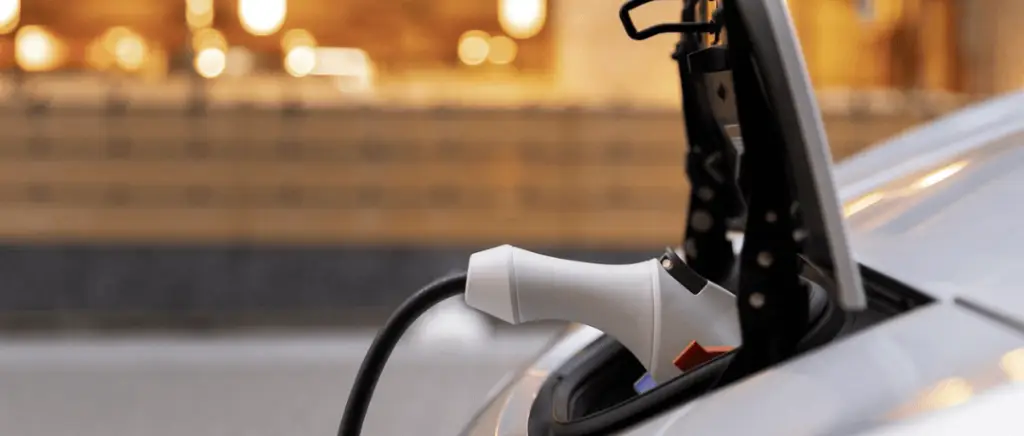Is it worth uninstalling my charging point at my future home?
Moving a charging point may seem complicated, but is it really worth doing? There are a number of factors to consider before making this decision.
If you have recently installed a charging point and invested in a quality installation, it may make economic sense to move it rather than buy a new one. This may be particularly relevant if you have benefited from financial assistance for the initial installation, such as the ADVENIR bonus for recharging infrastructure. In addition, By moving your current charging point, you keep the same equipment and the same charging parameters that you're used to. This can simplify your transition to your new home and avoid the adjustments required for new equipment.
However, as we'll see below, it's important to bear in mind that uninstalling a charging point requires the intervention of a professional to ensure that the operation is carried out safely and in compliance with standards. The costs associated with this operation, as well as reinstallation in the new home, can be significant. Before moving your charging point, we therefore recommend that you check whether the new home is compatible with the infrastructure required for a charging point. This includes the state of the electricity network and the availability of a suitable location for the charging point.
Monday to Friday
9am - 12.30pm - 2pm - 7pm
Who can uninstall my charging point?
Uninstalling a recharging point requires the intervention of qualified professionals.
Why call in a qualified professional?
Uninstalling a recharging point involves complex electrical operations. Only an IRVE-qualified electrician is qualified to carry out this work in complete safety. This qualification guarantees that the professional has received specific training and has mastered the standards in force, in particular standard NF C 15-100 applicable to domestic electrical installations.
Who can uninstall your charging point?
- The initial electrician : The first professional to contact is often the person who installed the bollard. He or she is already familiar with the specifics of the installation and will be able to carry out the de-installation in compliance with all safety standards.
- The IRVE qualified electrician: If you can't use the original installer, look for an IRVE-qualified electrician. These professionals are specially trained to handle recharging infrastructures and ensure safe and compliant de-installation.
- The specialist companies : There are also companies specialising in the management of recharging points, offering comprehensive services from feasibility studies to installation and maintenance.
Also read → Guide: installing a home charging point
Where should I put the charging point in my new home?
Proximity to the terminal
LaThe charging point should be placed close to your parking space to minimise the length of the cables, which reduces energy loss and the risk of overheating. If you have a garage, install the charging point on a wall adjacent to where the vehicle will be parked. If you don't have a garage, you can install it outside, as long as the bollard is weatherproof and well secured.
Compliance with electrical standards
Your electrical installation must comply with standard NF C 15-100which governs domestic installations in France. This standard imposes specific requirements for charging stations, including the installation of a dedicated differential circuit breaker to protect against overloads and short circuits. In addition, the charging point must be connected to an earth connection to avoid any risk of electrocution.
Access and safety
Make sure the charging point is easily accessible for daily charging without obstructing passage or normal use of the garage or driveway. Avoid placing the charging point in areas with heavy pedestrian traffic or near flammable objects. Safety must be a priority to avoid accidents or damage.
Cable management
To prevent tripping and damage to cables, use cable management solutions such as cable reels or wall brackets. This helps keep the space clean and organised, while extending the life of your equipment.
Forecasts for the future
If you are planning to install several terminals or other electrical equipment, consider an installation that can be easily extended, including the installation of additional conduits and the anticipation of future electrical power requirements.
Is it possible to receive aid for the installation of a charging point a second time?
The answer is yes, and it's entirely possible to receive a second round of support for installing a charging point in your new home. Here's an overview of the main grants available and the conditions for obtaining them. Note that all these grants can be combined.
| Modèles | Consommation* (nombre de kWh / 100 km) | Table Prix catalogue |
|---|---|---|
|
Tesla Model 3
|
14.7 kWh
|
53 490 €
|
|
Peugeot e-208
|
14.9 kWh
|
32 600 €
|
|
Mini Cooper SE
|
14.9 kWh
|
32 600 €
|
|
Volkswagen ID. 4
|
14.9 kWh
|
32 600 €
|
|
Hyundai Kona Electric
|
Content
|
Content
|
|
Renault Megane E-Tech
|
Content
|
Content
|
|
Nissan Leaf e+
|
14.9 kWh
|
32 600 €
|
|
Nissan Leaf e+
|
Content
|
Content
|
What are the procedures for installing a shared-ownership terminal?
Identify the need and choose the type of installation
In the case of an individual installation, a co-owner wishes to install a charging point at his own expense in his private parking space. In the case of a collective installation, the co-ownership wishes to install charging stations for shared use by the co-owners.
Making a request to the building manager
For an individual installation, the co-owner must inform the syndic by registered letter with acknowledgement of receipt, including a description of the work and a connection diagram. For a collective installation, the request must be included on the agenda for the next general meeting. The property manager must gather together the requirements and request quotes from several service providers.
Study and quotation
The property manager must assess the needs of the co-ownership and request quotes from IRVE-qualified installers. The various quotes should be compared to select the best technical and financial solution.
General Meeting vote
The proposal to install charging points must be put to a vote at the general meeting of co-owners. A simple majority is generally sufficient to approve the project. Once the project has been approved, the managing agent can finalise the contracts with the chosen service providers.
Carrying out the work
Installation must be carried out by IRVE-certified professionals, in compliance with current standards. The system can be connected either to the general electricity supply or via individual meters for precise metering of each user's consumption.
Financing and grants
Co-owners can benefit from various forms of assistance, such as the Advenir bonus, which covers up to 50 % of installation costs, and tax credits. To be eligible for these grants, installations must be carried out by approved professionals.
Monitoring and maintenance
The property manager or a service provider can take charge of managing and maintaining the charging points, with costs shared out according to each user's consumption.
Is the bollard warranty still valid after a move?
The warranty on a recharging point depends on a number of factors, including the specific terms of the warranty contract, the initial installation, and the way in which relocation is carried out. As a general rule, the warranty covers manufacturing defects and material malfunctions over a given period. For charging points, this period can vary, but is often between 3 and 5 years. For example, some extended warranties can go up to five years, covering repairs or replacement of the charging point in the event of a problem.
It is crucial that the bollard be relocated by a qualified professional, such as an IRVE-certified electrician (Recharging Infrastructure des Véhicules Électriques). This requirement is not only for safety reasons, but also to maintain the validity of the warranty. If the bollard is moved without the intervention of a qualified professional, this could invalidate the warranty.
When relocating, make sure you keep all invoices and documents relating to the initial installation and the new installation. These documents may be required for any future warranty claims. Some suppliers require the initial installation and any relocation to be carried out by an electrician for the warranty to remain valid.
❌Guarantee exclusions
It is important to note that some warranties explicitly exclude damage caused by incorrect installation, unauthorised modifications, or relocations carried out without the approval of a certified professional. Cosmetic damage, normal ageing and power surges are not generally covered by the warranty.
Will the charging point be an asset when selling your home?
The installation of an electric vehicle charging point is increasingly seen as a major asset when selling a home. With the steady increase in sales of electric vehicles, having a charging point at home is becoming a criterion increasingly sought after by buyers. An installed charging point adds significant value to a property. This is particularly true in areas where public charging infrastructure may be limited. The presence of this facility helps to reassure future buyers that it will be easy to recharge their electric vehicle, without having to incur the costs and take the necessary steps themselves.
If you would like to find out more about the tax credit for in-car charging points 2024For more information, see our article on this subject.
































